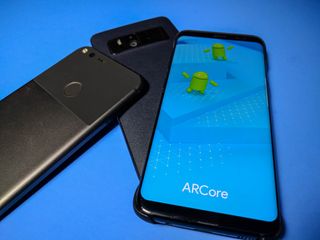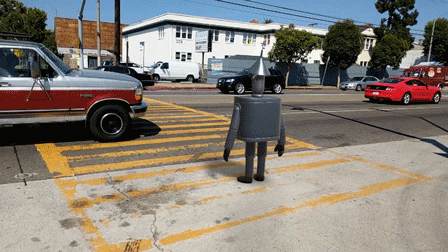Google's answer to ARKit is ARCore, and it's available right now

Shortly after the Android Oreo announcement, David Burke, VP on engineering and Android took to Twitter and hinted at "one more sweet surprise" coming this week. It turns out that surprise is an Augmented Reality SDK that takes all the brains of the Tango Core and makes it available to phones without the fancy sensors on the back. It's called ARCore, and it looks an awful lot like Google's answer to Apple's ARKit.
Here's what we know so far!

Where Tango phones are capable of filling entire buildings with Augmented Reality data that can be accesses from room to room, even as you go up and down stairs, ARCore is built for what is right in front of you. It uses the single camera on the back of your phone to detect flat surfaces and lets you place AR objects to walk around and explore.
The motion sensors on your phone let you wander around the stuff you've placed, giving it the illusion of existing right in front of you as long as you're looking through the phone. As long as you are in the same room as the thing you're playing with, or you're outside in a wide open space, it'll look like that thing is really there.
This is where the Tango brains kick in. ARCore uses the ambient light sensor on the phone to give developers more information for things like dynamic lighting and shading, so the shadows cast by the AR object should line up with the lighting in the room and the character will appear to be lit by the light in your area.

Out of the box, Google is ensuring there's plenty of support for ARCore so fans can start playing right away and developers can take inspiration from those concepts to build new things. On top of support from Unity, Unreal Engine, and prominent AR developers like Wayfair and Niantic, Google has AR versions of VR darlings like Tilt Brush and Blocks so people can start creating in AR right away. In theory this means not only are there killer apps out of the box with support for thing like Pokemon Go on the horizon, but games powered by Unreal and Unity could be right around the corner.
Google's AR strategy also goes beyond the Play Store with prototype browsers aimed at developers who want to build AR for the web. These browsers will enable ARCore and ARKit users to access AR tech right from the browser, encouraging developers to build for everyone instead of just one platform.
Be an expert in 5 minutes
Get the latest news from Android Central, your trusted companion in the world of Android

While ARCore isn't anywhere near as capable as a full Tango phone, the most important feature here is accessibility. Google is launching ARCore today as a preview for Galaxy S8 and Pixel phones, with plans to quickly grow the number of phones that can support ARCore. Huawei, ASUS, and LG phones are expected to join this list shortly, with an internal goal of 100 million supported phones by the end of the preview. According to Google, Android 7.0 or higher is the current limitation for phones that could eventually be supported.
Are you excited to try out ARCore? Check out Google's AR Experiments showcase on your Pixel or Galaxy S8 today to see what you can do!

